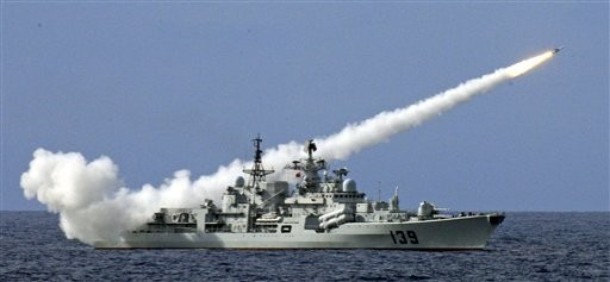Each of the three key regions of Asia has at least two competing nuclear powers, declared or undeclared, of which at least one can nuke mainland America or will be able to do so in the not so distant future. So, the ex-ante commitment of the United States to intervene in conflicts involving Asian powers is not credible ex-post. It is a different matter that in its latest national security strategy document, the United States reiterates its ‘unshakable’ commitment to the security of its allies and highlights its Australasian alliances as ‘the bedrock of security in Asia.’ The ongoing American-Korean naval exercise might be seen as evidence of the unshakable US commitment. But it is unlikely that any state would dare militarily intervene in a Korean War if North Korea’s beloved leader issued a nuclear warning to potential interventionists. What if one nuclear missile manages to dodge missile defence systems?
Interestingly, the commitment of the United States to protect West Europe in the event of Soviet attack was also time-inconsistent. France and Britain acquired indigenous nuclear capacity and plugged this loophole in the security arrangement. But in post-1945 West Europe, inter-state conflict was not related to who was acquiring however many nuclear weapons. Nuclear mudslinging was an exclusive US-Soviet privilege. France and Britain were content with minimum deterrence and did not try to undermine each other’s nuclear programs. But disputes over acquisition of nuclear capacity are a key component of conflicts among Asian powers. The Sunni Middle East, and by extension Pakistan, is not comfortable with Iranian and Israeli nuclear programs, whereas Israel is uncomfortable with Iranian and Pakistani nuclear capacities. Likewise, China is uncomfortable with Indian and Japanese nuclear capacities whereas India and Japan have reciprocal concerns regarding China and North Korea. The lack of nuclear trust between India and Pakistan needs no elaboration. Mutual distrust among Asian powers is enhanced by the fact that nuclear powers in each of the key regions of Asia have at least one nuclear-capable ‘ally’ in each of other regions. The Asian nuclear puzzle is particularly complex because four Asian nuclear powers have at least two nuclear neighbours each.
In short, given the strategic complications and the risk of being nuked, the United States cannot directly intervene in the event of an outbreak of conflict involving Asian nuclear powers. However, being the only country with reasonably good relations with all Asian countries, except North Korea and Iran, both of them nuclear outcasts, it should/will continue to serve as a channel of communication between rival Asian powers. The European Union’s capacity to mediate is limited due to lack of coherence among the foreign policies of its constituents and, occasionally, colonial baggage. There is no country within Asia that can serve this purpose due to ethno-linguistic and religious heterogeneity and historical differences. Different countries in the region are at different stages of democratisation, which further strains inter-government rapport. Furthermore, ASEAN and SAARC are examples of how local multilateral arrangements consistently fail to go beyond diplomatic piety.
Unfortunately, communication is necessary but not sufficient for a credible security arrangement. Therefore, the United States cannot underwrite Asian security. The impossibility of a dominant power, in a world that abounds in long-range nuclear missiles, which can make time-consistent commitments, compels Asia to find a new mechanism to resolve the nuclear security dilemma facing it and to ensure that Europe’s past is not its future. Any acceptable mechanism has to be multilateral, to spread the risks of nuclear confrontation evenly, and attend to Asia as a whole, rather than in parts, due to nuclear inter-linkages across the three key regions highlighted above. Unfortunately, Asia has so far not managed to rise above regional barricades, partly due to rivalries between nuclear powers, and, therefore, the desirable multi-lateral mechanism is unlikely to be established any time in the near future.
Vikas Kumar is an independent researcher based in Bangalore.

